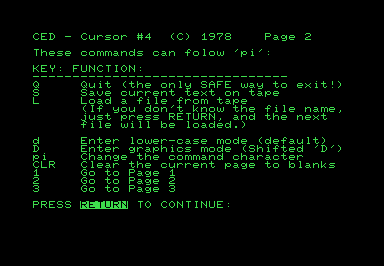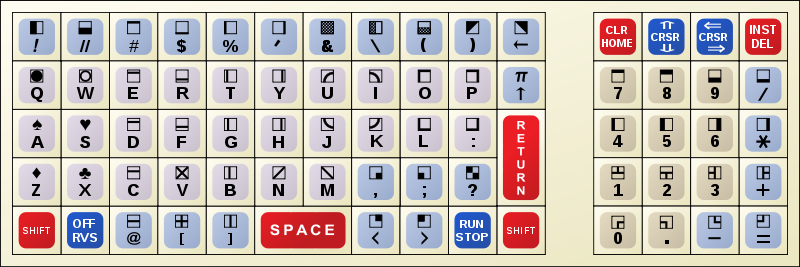
CED
Publisher: CodeWorks - CursorGenre: [uncategorized]
Programmer: (Unknown)
Year: 1978
Language: (Unknown)
Downloads: 1
Screenshot: CURSOR/CED.webp
Changing the size of memory or changing the ROM version forces a reset of the PET.
The emulator has an IEEE-488 device at address 8. It can be used load and save (.prg) files.
Some programs don't run on ROM1 and some require more memory than the default 8K.

Game Notes
May include inaccurate AI generated content
CED is a simple text editor that can store up to three screenfuls of text. The PET can use one of two character sets: the business set, with upper and lowercase letters; and the graphics set, which replaces the lowercase letters with PETSCII graphics characters. By default, the editor runs in business mode, but you can switch to graphics mode if you want to use the editor to create PETSCII screens. Assigning the p key to open the command menu is an unconventional choice by the programmer, but does make sense with the PET keyboard layout. The PET lacks the function keys found on later Commodore machines, so Fisher chooses a key that is unlikely to find much use in a text editor.
CED comes with a warning that it will only work on old ROMs. Anyone familiar with the PET and CBM machines knows that they are part of a complicated family tree. Compatibility among the various models is always an issue. In this case, you can run the program on the 8K PET with the original ROM, but not later models with an upgraded ROM. There were several breaking changes in the new ROM. If you run CED on a 4016, you can see inverted case text owing to changes in the character ROM and some time after the initial program setup, a BRK instruction drops you into the built-in monitor.